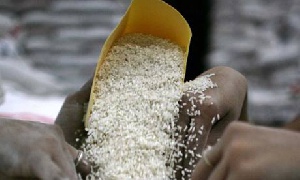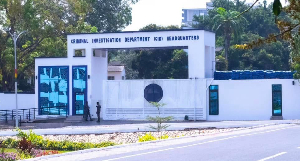New technologies introduced to dry season rice farmers at the Daffiama and Sankana irrigation dams in the Upper West Region have boosted rice production.
The adoption of the ‘Feed the Future Ghana Agricultural Technology Transfer (ATT) project’s Urea Deep Placement (UDP), rice transplanting, the provision of certified rice seeds, free fertilisers and planting on rolls technologies had helped increase production compared to the indigenous broadcasting system known to the farmers.
The interventions also allowed more rice to be planted and made weeding and harvesting easier and faster, as well as helped to reduce cost and promote maximum utilisation of fertiliser than the traditional broadcasting system.
A plant could develop about 25 to 30 tillers as compared to the traditional method of broadcasting, which produced about 14 tillers.
The project’s goal is to increase the availability of appropriate and affordable technologies to sustainably improve the competitiveness of maize, rice and soybean value chains in Northern Ghana.
It focused on integrated soil fertility management, seed sector promotion and upscaling of high quality seeds, capacity building in research.
At ‘Farmers’ Field Day’ at Daffiama in the Daffiama, Bussie, Issa District to evaluate production levels and benefits of the technologies, the farmers said they were happy with the new innovations introduced to them.
The Field Day brought a number of farmers in the communities to the field to witness the harvesting of the rice, and they expressed interest to participate in the project.
Some of the farmers who interacted with journalists said they were happy with the vigour of the crops and expressed surprise with the high yields.
The farmers promised to put all the 20 hectares irrigable land area into rice cultivation using the technologies.
They, however, expressed that livestock are destroying the rice, and appealed to community members to control the movement of the animals.
The farmers also asked the sponsors of the project to consider fencing the fields to stop stray animals from destroying the crops.
Madam Mabel Bogtege, a rice farmer, said at first it was difficult to transplant the rice since that caused her waist pains, but now all had turned to be joy because the quality and quantity of rice on stock is good and beyond her expectation.
“I am going to sell some, keep some as seed and eat the rest”, she said.
Mr Samuel Ayamga Atia, Regional Technical Manager of the ATT, said the project has been introduced in Tono and Vea in the Upper East Region and Bontanga and Golinga in the Northern Region, which yielded positive results.
Farmers implementing the technology are realising rice yields from 24 to 28 bags per an acre of land as compared to the traditional system of broadcasting, which gave them three to five bags.
He said the project acquired four briquettes machines to produce fertilisers for rice farmers in the Upper East and Northern regions, and that had helped increase rice production to more than 300 per cent.
He said apart from the Daffiama and Sankana communities, 10 other communities have been identified in the region to benefit from the project next season.
The ATT, in collaboration with Ghana Irrigation Development Authority, had established Learning Centres on the fields for rice farmers to see all the best practices that were associated with the technologies.
Mr Tia said the farmers were involved in the training on all the practices such as nursery, transplanting and UDP application, which involved placing urea briquettes at a depth of seven and 10cm between four rice plants seven to 14 days after transplanting to improve nitrogen fertilisation in irrigation rice systems.
“This one-time application of the urea significantly reduces the recommended rates of urea while increasing the yields of paddy rice by an average of 15 and 30 per cent,” he explained.
The technology helps to reduce nitrogen losses through run-off and leaching volatilisation, and enhances the availability of nitrogen for the crops, he added.
It also suppresses weed growth, thereby reducing cost of weeding while increasing yields and reducing cost of fertiliser.
Dr Boubakary Cisse, Rice Seed Expert, USAID Seed Scaling Project, said the project’s goal was to stimulate the development of a sustainable rice seed system in Northern Ghana.
He said the project would help improve seed planning and connecting actors along the rice seed value chain, strengthen capacity of rice seed value chain actors and facilitate access to adapted equipment from seed production to conditioning and storage.
He said the project would facilitate access to quality breeder seed for private sector companies intending to produce foundation seed and facilitating access to quality foundation seed for out-growers intending to produce certified seed both at commercial and informal sectors.
Dr Cisse announced that the project would produce 6,000 tonnes of certified and quality seed to farmers in the north before it folds up.
USAID-Ghana is funding the five-year project to increase the competitiveness of rice, maize and soybean value chains, fostering broad-based and sustained economic growth through the increase availability of agricultural technologies and increasing productivity in northern Ghana.
The project focuses on Ghana’s Feed the Future intervention zone covering the Savannah ecological zones of the Northern, Upper East and Upper West regions.
The International Fertiliser Development Centre has been the lead implementer of the ATT project.
Business News of Wednesday, 20 July 2016
Source: thefinderonline.com













